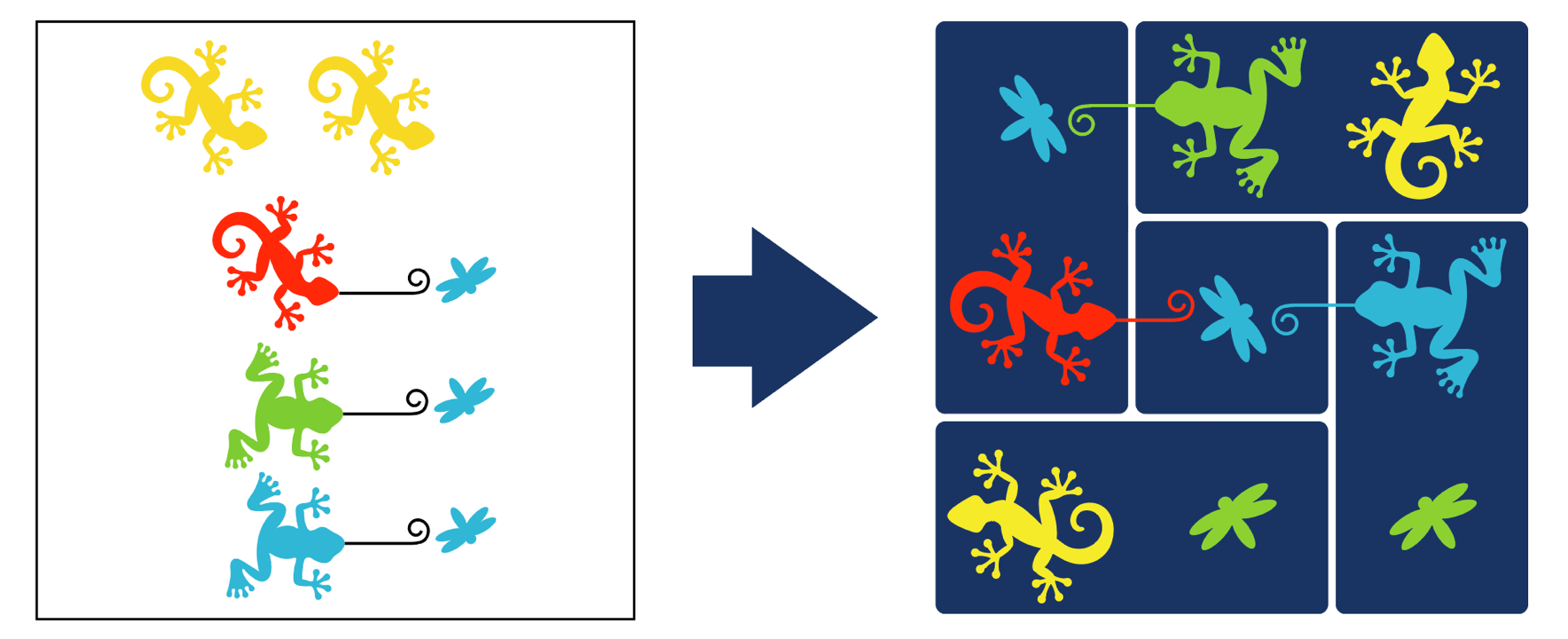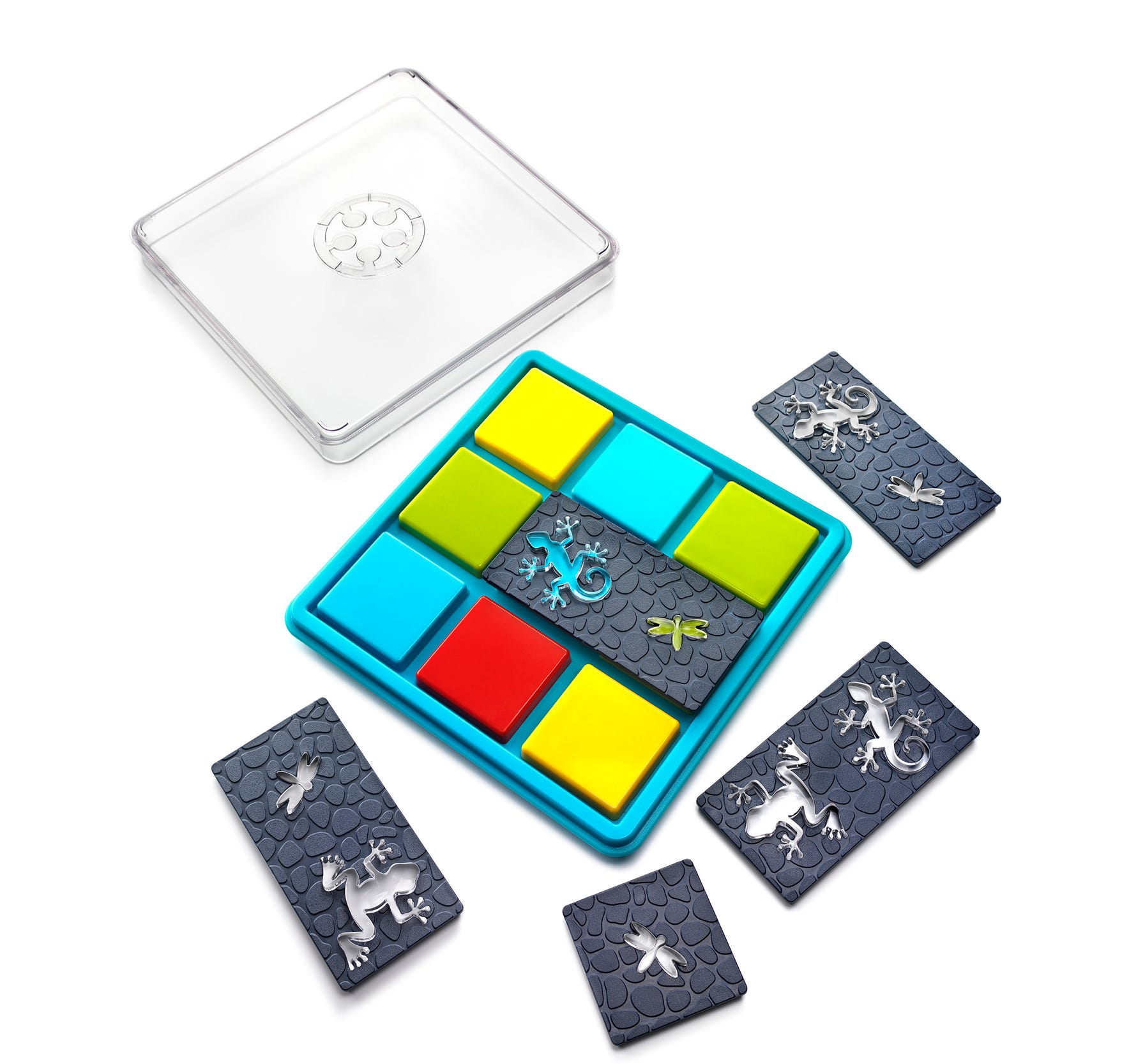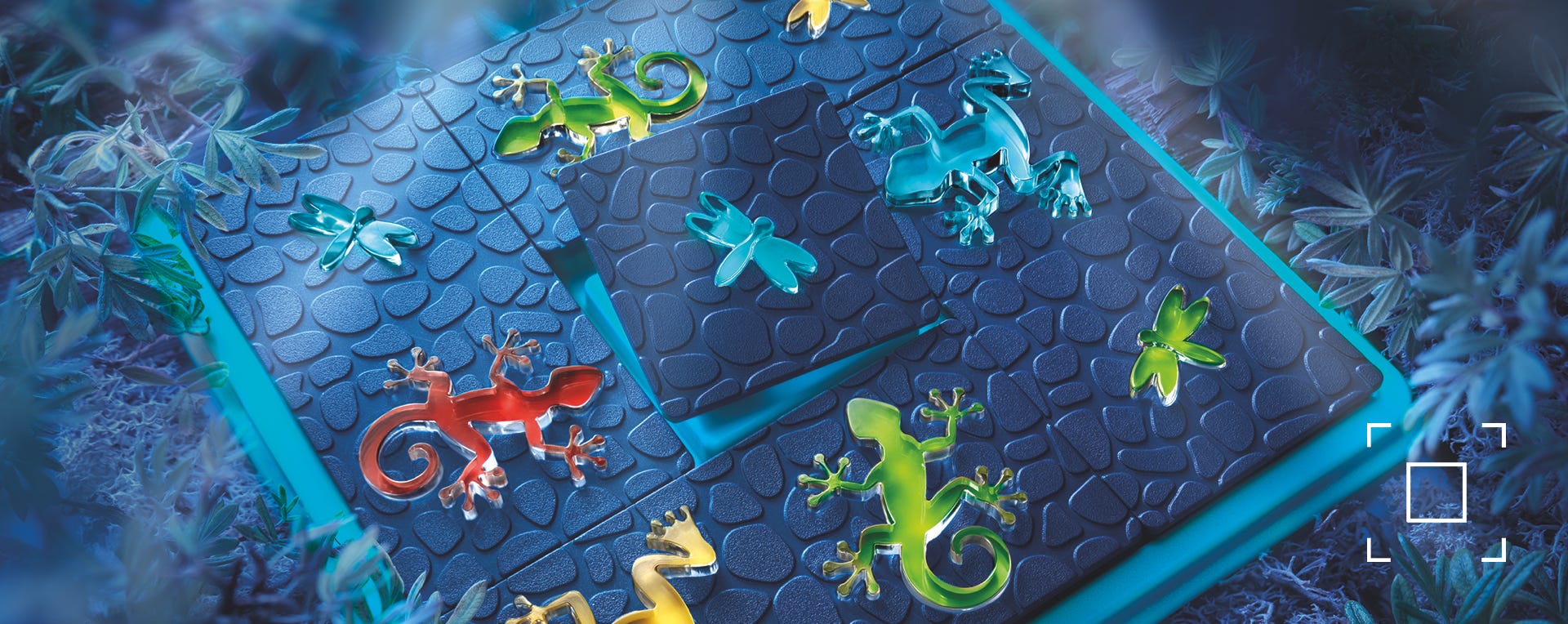
Colour Catch
The story behind the creation of Colour Catch (for SmartGames)
Raf Peeters, January 2019
With Color Catch I could combine in a puzzle game 3 things that fascinated me:
• animals that change color (like a chameleon for example)
• frogs that catch bugs with their tongues
• gecko’s, salamanders or lizards, not because I specifically like these animals, but because they have an iconic silhouette
STICKY TONGUES
At first sight, this game doesn’t offer the same 3D appearance of cute animals everybody loves in the more recent SmartGames. But place this game under the right light, remove one of the puzzle pieces and you will immediately realize what is special about it. The game doesn’t include puzzle pieces with colored frogs and salamanders, but with transparent ones! The color actually comes from the squares of the game board underneath. The colored squares are fixed to the game board, so a challenge doesn’t require any setup whatsoever.
The color of each animal depends on where you place it. The object of the game is to place all puzzle pieces on the game board so that the color of your animals corresponds with the challenge. If a frog or salamander can catch a bug, this bug is shown in the challenge.
Bugs that can’t be caught, will of course still be visible in the solution, but will not be shown in the challenge. Frogs or salamanders that don’t show a tongue with bug in the challenge, should not be able to catch a bug in the solution! Their heads will be pointing in the direction of the border or in the direction of other frogs/ salamanders.
Sometimes different animals are able to catch the same bug. In the example above, you can see that the red salamander and blue frog catch the same blue bug and that the green frog catches another blue bug. Of course, when looking at the challenge you don’t know that. But you can deduct that at least 1 blue bug needs to be caught twice, because there are 4 blue animals on in the challenge, but only 3 blue squares on the game board.
Originally I was working on a game for the magnetic travel range of SmartGames. The puzzle pieces were flat with the shape of the animals cut out. But when I was asked to make a compact game of it, I made the animals more 3D by placing a transparent part underneath each puzzle piece that sticks through this opening.
If you don’t use logic, this game looks really hard. For example how can you know which salamander needs to be green, if you have 3 options for the puzzle piece and 3 green places (with many orientations) on the game board? But when you start with the element with the most restrictions, most challenges are easy to solve using logic and deduction.

example of a challenge (left) and solution (right)

GAME RULES COLOUR CATCH
1) Select a challenge and remove all puzzle pieces from the game board. Every challenge shows 2 frogs and 3 salamanders with different colors. Some challenges also show bugs.
2) Place all puzzle pieces on the game board so that the frogs, salamanders and bugs match the colors shown in the challenge:
• The color of an animal will change based on where it is placed on the game board.
• The position of the animals does not need to match what is shown in the challenge. Only the color is relevant!
• Bugs are included on the puzzle pieces but are only shown in the challenge when they can be caught by a frog or salamander. In these challenges the frogs and salamanders must be placed so they can catch the bugs directly in front of them.
• In some challenges the same bug can be caught by more than one frog or salamander. In these cases a challenge can show two salamanders catching separate bugs of the same color; however in the solution they may catch the same bug.
3) There is only 1 possible solution, shown at the end of the booklet.
Hint:
Use deduction and logic to find the right place for every puzzle piece. Some colors, animals or combinations have fewer options than others. Begin by looking for the animal with the fewest possibilities.
Website ©2019 Raf Peeters
Products and images: © Smart
